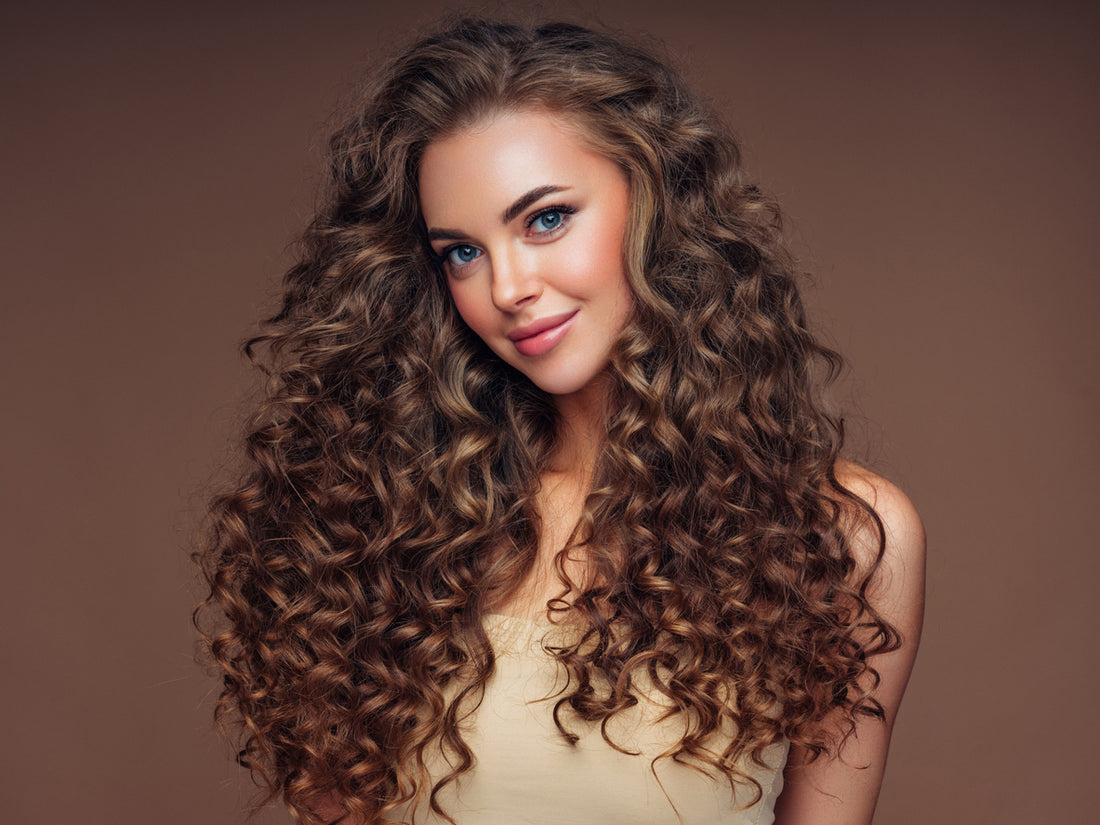
The Pain Free Guide to Detangling Hair

We love our wild and free curls, waves, and coils, but if you're like most natural hair goddesses - chances are you don't love detangling hair. The road to perfect Instagrammable waves is often met with a few snags. The good news is that detangling natural hair doesn't need to be a hair-pulling process. In fact, detangling hair can be painless and efficient with the right technique and a hair healthy approach to styling your lovely locks.
RevAir has your natural curls covered with a simple guide to detangling. These easy tips are designed to make detangling hair a breeze, minimize breakage, and promote healthy hair goals for all-natural hair types. The result? Softer, more manageable hair that glows from the inside out.
Start detangling hair the healthy way with these essential curly hair care tips for coils, waves, and everything in between.
Start With a Shower Routine
Detangling hair begins in the shower. This often skipped step can make or break your hair -- literally!
Brittle hair is one of the most frustrating problems for curly-haired goddesses. If you've ever felt your hair was so dry that it may snap off during detangling, you're not alone. Before attempting to smooth your curls and work through any kinks, it's important to start with a hydrating shower routine designed to moisturize and nurture.
Focus on the right cleansers and conditioners for easy detangling. Cleansing is an important step in maintaining natural hair, especially if you're rocking a protective hairstyle or simply leading an active lifestyle. This step prevents build-up and reduces inflammation to keep your scalp healthy. However, it's equally important not to use ingredients that are too harsh and drying.
Avoid sulfate, silicone, and alcohol-based cleansers. Sulfates often come in the form of sodium lauryl sulfate and sodium laureth sulfate. Don't let the label fool you! These cleansers strip the hair shaft of moisture. Over time, they can break down the protein bonds and expose the cuticle to damage. If you've ever left the shower with matted and tangled hair, your cleanser may well be the culprit!
Follow up a healthy cleansing routine with an ultra-moisturizing conditioner. When choosing the right conditioner for your hair type, look for formulas that provide the most "slip." Slip refers to how easily your fingers can glide through your hair. The best ingredients for natural hair include oils and butters like jojoba, coconut, argan, primrose, and even gentle, cleansing honey. When using these conditioners, your hair should feel sleek and movable. If you're hitting lots of snags during your shower routine, this may be a sign to switch conditioning products.
Test out different conditioners until you find the best match for detangling hair and use our healthy hair ingredient tips as your natural hair product shopping guide.
Prep Your Hair While Wet
Save time when detangling hair by prepping your curls in the shower. After applying a conditioner with lots of slip to make styling your natural hair effortless and pain-free, start by detangling any knots or snares in the shower. Work through knots gently using only your fingers to loosen and take apart the tangles. This is a great way to keep post-shower mats from developing. Your hair will be far more workable after pre-detangling.
Of course, if you prefer to use a brush, some of our favorite wet brushes include wide-toothed combs and paddle brushes. Opt for a brush designed for wet hair and/or curls, or keep it simple with a wide-toothed comb - can't go wrong! Try The Wright Detangling Comb - Type 3 and Type 4 curly hair goddesses love it for after-shower detangling, and it cuts down some time on your hair routine, too!
Beyond the Brush: Detangling Hair Tools and Products
High quality detangling products designed for natural curls are essential when it comes to speeding up your morning routine. Hydration stimulates our hair's natural oils to promote shine and movement. Moisture is what keeps hair from becoming brittle and tangled, while also restoring your hair's youthful elasticity to prevent breakage during brushing.
Maximize moisture with nourishing shampoos and conditioners that are free of sulfates, parabens, fragrances, and phthalates while prioritizing vitamins A, E, and B12. Apply a leave-in conditioner treatment 2-3 times per week and treat your hair to a salon-quality protein treatment bi-monthly to support your curls' natural strength and beauty.
Right out of the shower - apply a detangling product that adds shine and fights frizz, like the RevAir Bright Spot Detangling Shine Spray Use your favorite wet brush or comb and take your time with your fragile wet hair, working in small sections until your whole head is detangled.
Thinking beyond brushes, other tangle-free natural hair tools include satin scrunchies in place of elastics, satin pillows cases, static-free scarves, and bonnets. A healthy diet goes a long way in promoting healthy hair. Focus on wellness by ensuring your diet includes plenty of antioxidants, healthy fats, complex proteins, and iron.
Lastly, if your hair is feeling a bit lackluster and seems more prone to tangles than usual, it may be time to give your curls a break. Opt for a protective style that allows your hair to rest and rejuvenate. Braids, twists, and locs are the best ways to protect your hair, take a break from detangling your natural curls, and continue to rock flawless style. There's no awkward transition phase and detangling hair is far easier with a protective style. Many natural hair beauties opt to put their curls in a protective style if they know they have a big trip coming up and will be too busy traveling and enjoying the sights to run through a full detangling routine.

Know Your Knots
Knot all tangles are the same! In following, a one-size-fits-all approach to detangling can often lead to frustration, endless hours prepping your hair, and -- you guessed it -- breakage. Not only does detangling hair require a tremendous amount of patience, but knowledge of different types of tangles comes in handy.
Single Strand Knots
Single strand knots, sometimes known as "fairy knots," are not quite as cute as they sound. These knots are often the ones that make us say "ouch!" when tying our hair up or running a brush through. The best way to get rid of these knots? Cut them!
While the knots are still small and easily removable, your best option is to snip these or gently loosen and pull them out. Think of single-strand knots as burrs that are best plucked out of your lovely locks. There's no need to spend tons of time detangling these with spray and brushes. A quick snip is all you need to restore your hair's former glory.
Knotted Ends
Knotted ends may be a sign that it's time for a haircut! Regular trims are a great help when it comes to detangling hair. Not only does trimming away dead ends rid your curls of tangles, but routine trims promote healthy hair growth. If you're growing out natural hair, don't neglect salon visits. In the meantime, layer on the conditioner, starting from the bottom up.
Mystery Mats
Sometimes we get a knot or a mat that leaves us scratching our heads and pulling our hair. How do these mystery mats even happen and where do they come from?
While no one can solve the origin of these mysterious knots, we can help when it comes to detangling hair. No, don't reach for the scissors. Mystery mats are best handled with a liberal dose of detangling spray and plenty of patience. Section the hair off and spray the entire strand before gently pulling the knot apart with your fingers. The process for detangling mystery mats may seem tedious, but your hair will thank you for minimizing breakage to your lovely locks.
Curls and Baby Hairs at the Nape of the Neck
Curly hair often has a few layers of depth. These amazing layers bring out your voluminous texture, but they can also cause a few tangles at the nape of the neck. Tangles on the bottom layer of your hair are often associated with bedhead. If you find that you're waking up with out-of-control knots and baby hair tangles, consider using a silk scarf, bonnet, or satin pillowcase to minimize static and preserve your hair's moisture. Unlike cotton that wicks moisture away (think of an athletic wear cotton tee), satin is gentle on your curls and helps them retain hydration.
Mastering the art of detangling your hair is a work in progress for all of us. A healthy hair detangling routine should incorporate a mix of products, tools, and plenty of patience. While detangling hair can be tedious, working through those knots can tell us a lot about our curl type and inform us on the best approach for preventing breakage while styling.
Keep these detangling tips on hand for speeding up your home hair care routine. Curious about what your curl type says about your styling and product needs? Ask our experts! The team at RevAir is here to support all of your natural hair goals as we continue to celebrate the amazing diversity of hair types and textures. Enjoy the glow-up with our curly hair community.















